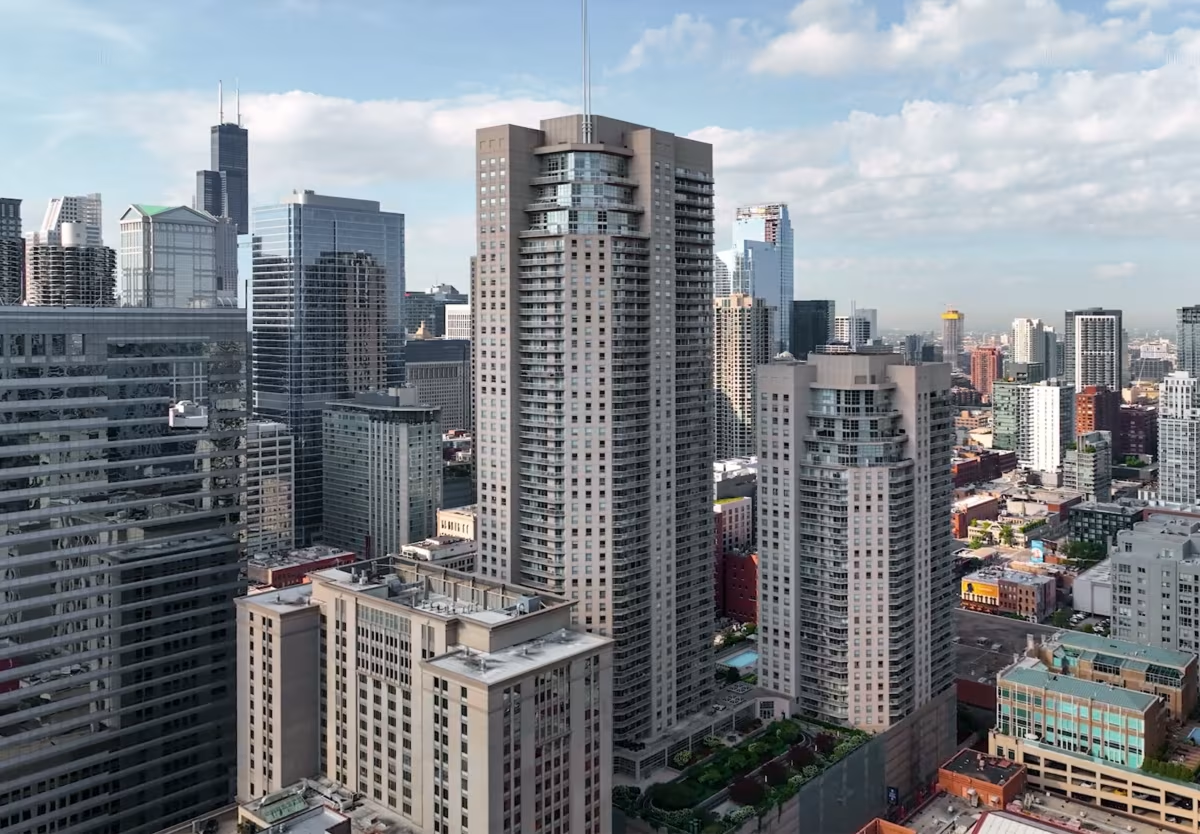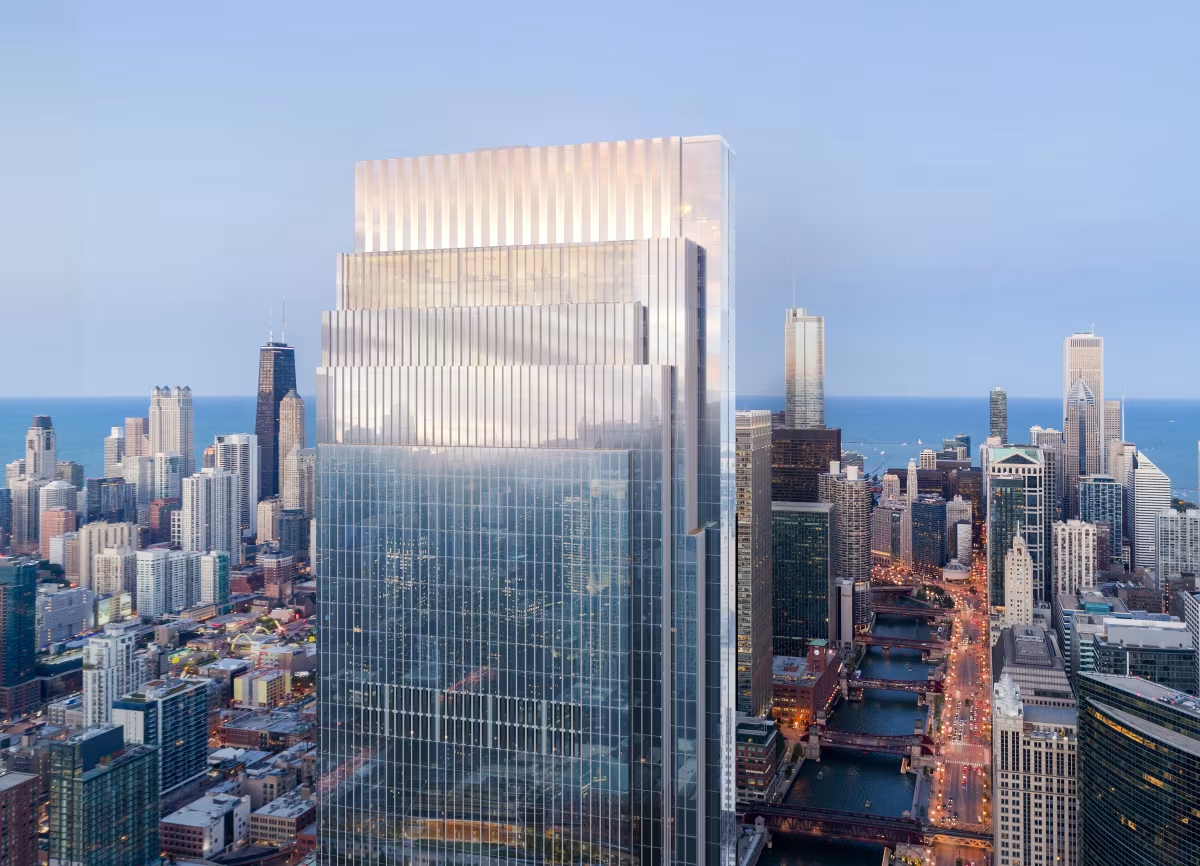Grand Plaza I Building vs Salesforce Tower


Comparing the Grand Plaza I Building and the Salesforce Tower is interesting because they both rise in Chicago, IL, yet they were conceived by two different design teams, Loewenberg + Associates and Pelli Clark & Partners, and were completed at different points in time. They were finished over two decades apart.
This contrast within the same city allows us to see how different creative minds interpreted the evolving needs of Chicago across time.
Let's take a closer look!
Height & Size
The Salesforce Tower is clearly the larger tower of the two, both in terms of height and number of floors. It rises to 817ft (249m) with 57 floors above ground, while the Grand Plaza I Building reaches 641ft (195.4m) with 56 floors above ground.
Salesforce Tower also offers more total built-up area, a total fo 1,449,994 sqf (134,709m2), which is about 87,091 sqf (8,091m2) more than what the Grand Plaza I Building offers.
Of course, each project may have faced different briefs or regulatory constraints, which we don't really know about and could also explain the outcome.
Architectural Style
Both the Grand Plaza I Building and the Salesforce Tower were designed in line with the aesthetic conventions of the Contemporary style.
At the time, this style was at the height of its popularity. So both Loewenberg + Associates and Pelli Clark & Partners followed what was in many ways expected of them, producing designs that fit comfortably within contemporary architectural norms, rather than breaking with convention.
Uses
The Grand Plaza I Building follows a mixed-use model, combining residential, retail and parking. In contrast, the Salesforce Tower has remained primarily commercial.
The Grand Plaza I Building offers 481 residential units.
The Grand Plaza I Building also provides 1000 parking spaces.
Structure & Facade
Both towers share the same structural solution, a Frame system.
A frame structure uses a grid of columns and beams to carry the building's loads. This frees the walls from structural duties, allowing for flexible floor plans and larger windows.
However, when it comes to the facade, both buildings use different approaches. The Grand Plaza I Building uses a Modular facade, while the Salesforce Tower uses a Curtain Wall facade.
A Modular facade like the one seen in the Grand Plaza I Building employs prefabricated panels, often mixing solid surfaces with smaller windows, while a curtain-wall facade like the one seen in the Salesforce Tower uses a lightweight glass curtain wall hung from the structure.
| Grand Plaza I Building | Salesforce Tower | |
|---|---|---|
| Loewenberg + Associates | Architect | Pelli Clark & Partners |
| 1997 | Construction Started | 2020 |
| 2003 | Year Completed | 2023 |
| Contemporary | Architectural Style | Contemporary |
| Mixed | Current Use | Commercial |
| 56 | Floors Above Ground | 57 |
| 195.4 m | Height (m) | 249 m |
| 126618 | Built-up Area (m²) | 134709 |
| Frame | Structure Type | Frame |
| Concrete | Vertical Structure Material | Steel |
| Yes | Facade Structural? | No |
| Concrete | Main Facade Material | Steel, Glass |
| James McHugh Construction Co. | Main Contractor | Walsh Construction |
| Magellan Development Group, US Equities | Developer | Hines |
| Thornton Tomasetti Engineers | MEP Engineer | Alvine Engineering |
| Koz Sowlat | Structural Engineer | Magnusson Klemencic Associates |
| IL | State | IL |
| Chicago | City | Chicago |
| 540 North State Street | Address | 333 West Wolf Point Plaza |